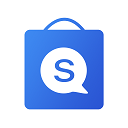A theme is a template that determines the way that your
online store looks and feels. Different themes have different styles and
layouts, and offer a different experience for your customers. For example, if
you're selling spa products, then you probably want your online store to feel
relaxed and luxurious. Alternatively, if you're selling electronics, then you
might want your online store to look energetic and sleek.
You can change your theme in Themes Store (Settings > Online store > Themes Store).

When you make changes to your theme or switch to a new theme, it doesn't affect the other parts of your account. You can play around with different theme styles and settings without worrying about the rest of the content in your admin.
Although each theme is different, all themes have some
common features. All themes let you use the same types of pages, and all pages
include some standard elements. The following page elements and page types make
up a theme's structure.
All pages of a theme include these page elements:
|
Element |
Description |
|
Header |
The content container that appears at the top of each page of your
store. The header usually includes your store's name, your logo, main menu
navigation, and cart icon. |
|
Body |
The area on every page of your online store between the header and
the footer. Unlike the header and footer, which are fixed elements that stay
the same on every page, the body of the page is dynamic, and contains content
that changes depending on the page that you are on. |
|
Footer |
The content container that appears at the bottom of every page of
your store. The footer might include menus, social media icons, contact
information, or a newsletter signup. |
|
Navigation |
A menu or a series of menus that provide a way for customers to
explore or move around your online store. The main menu navigation is
included in the header of a theme. |

